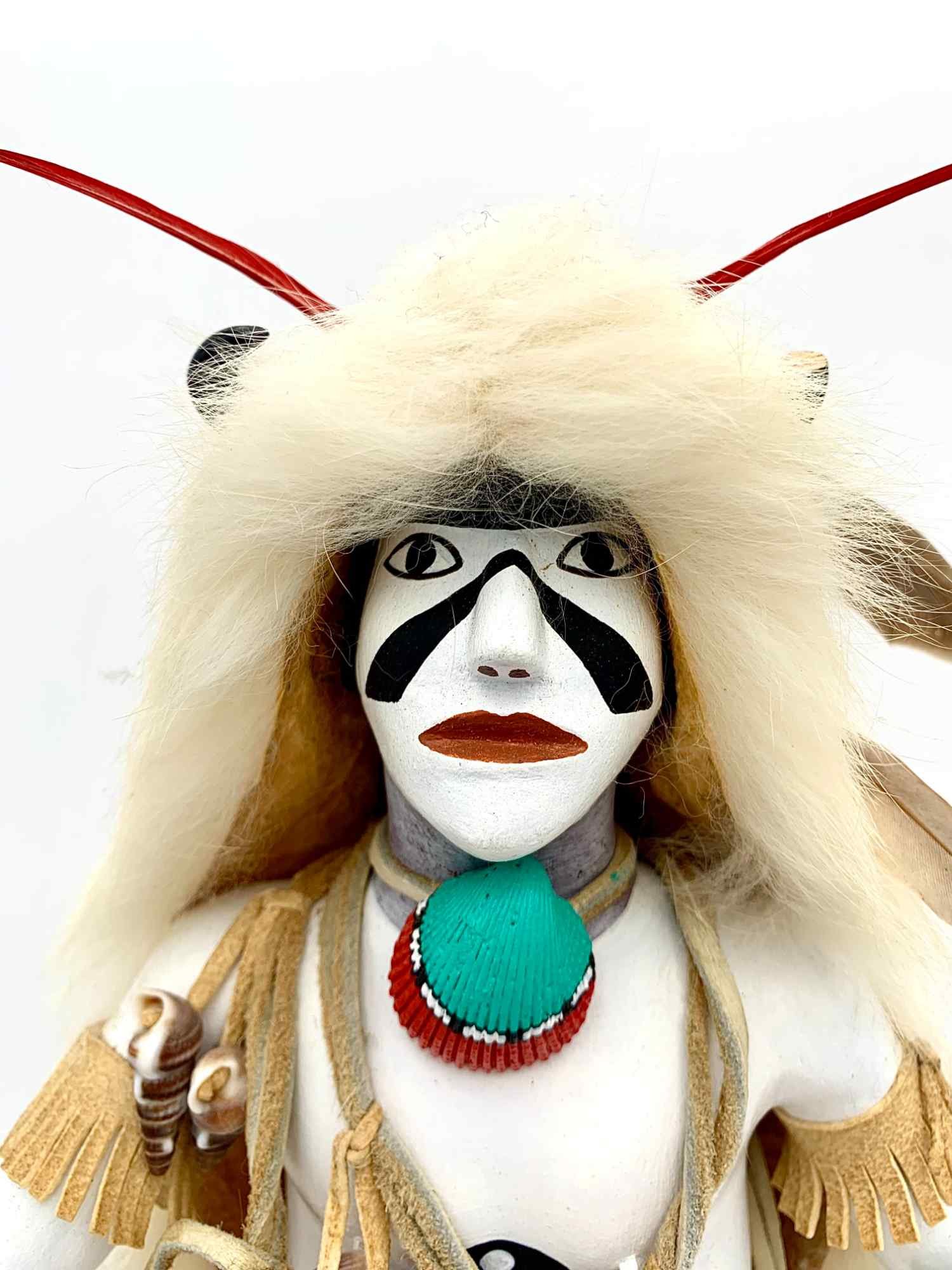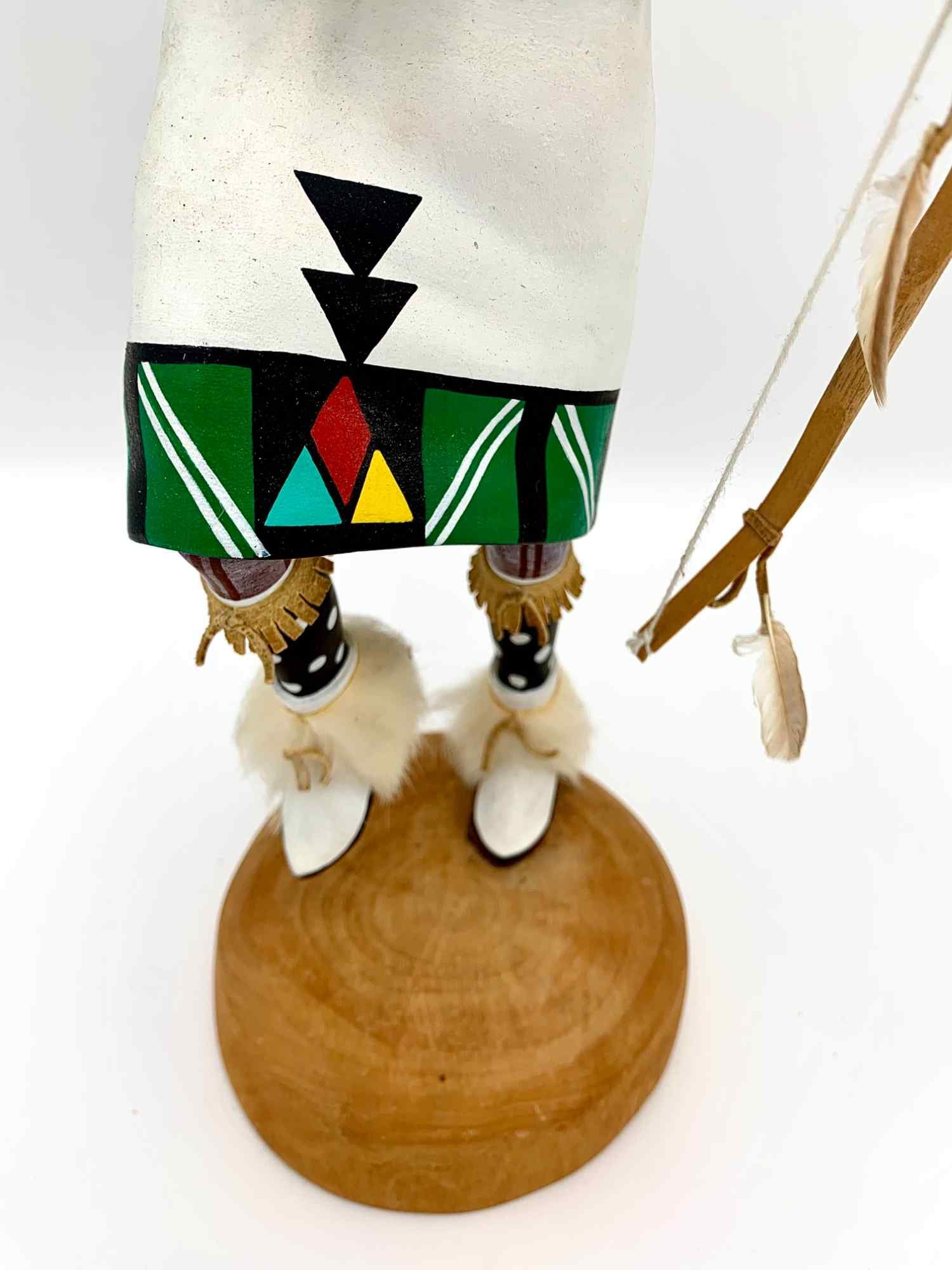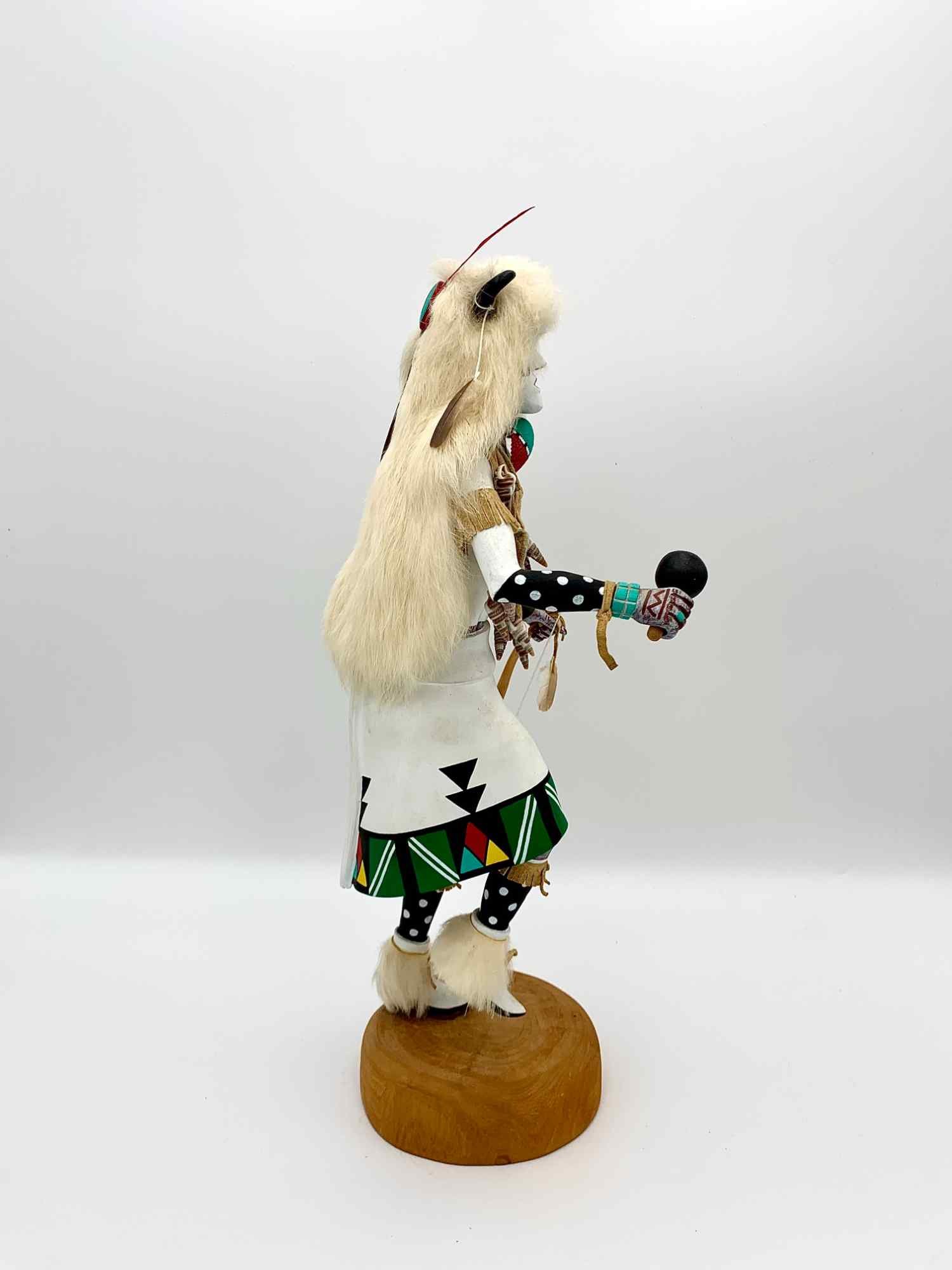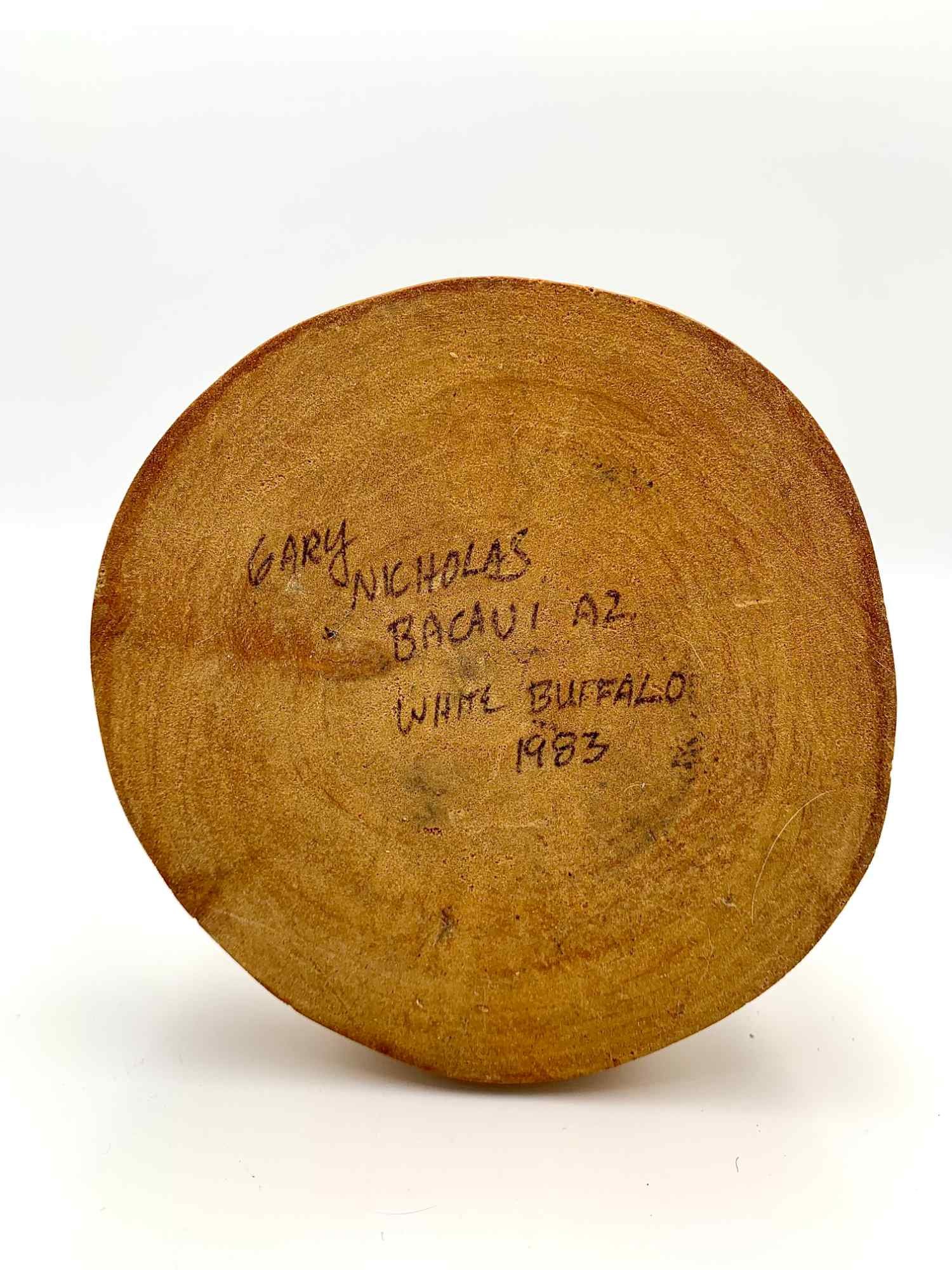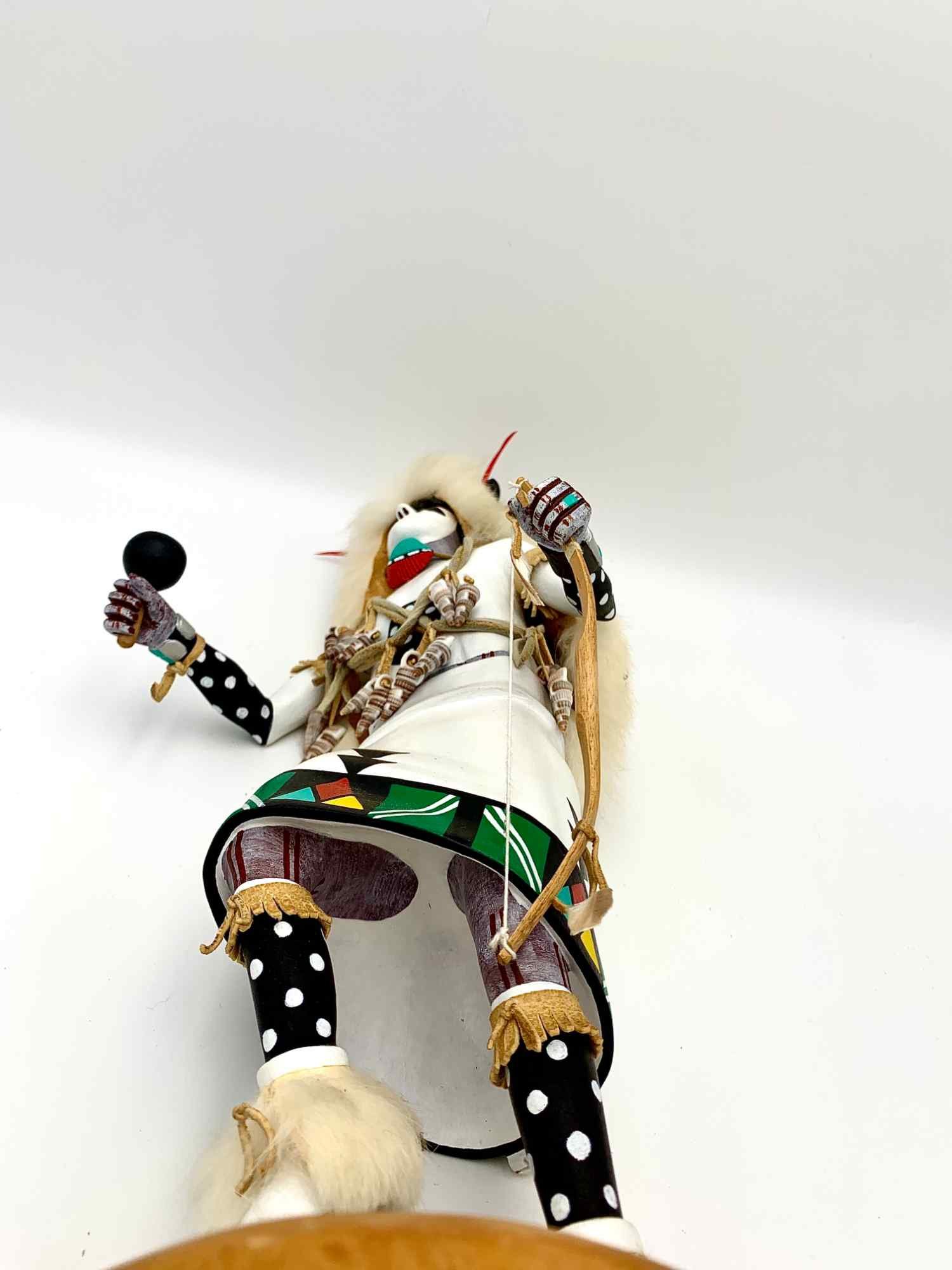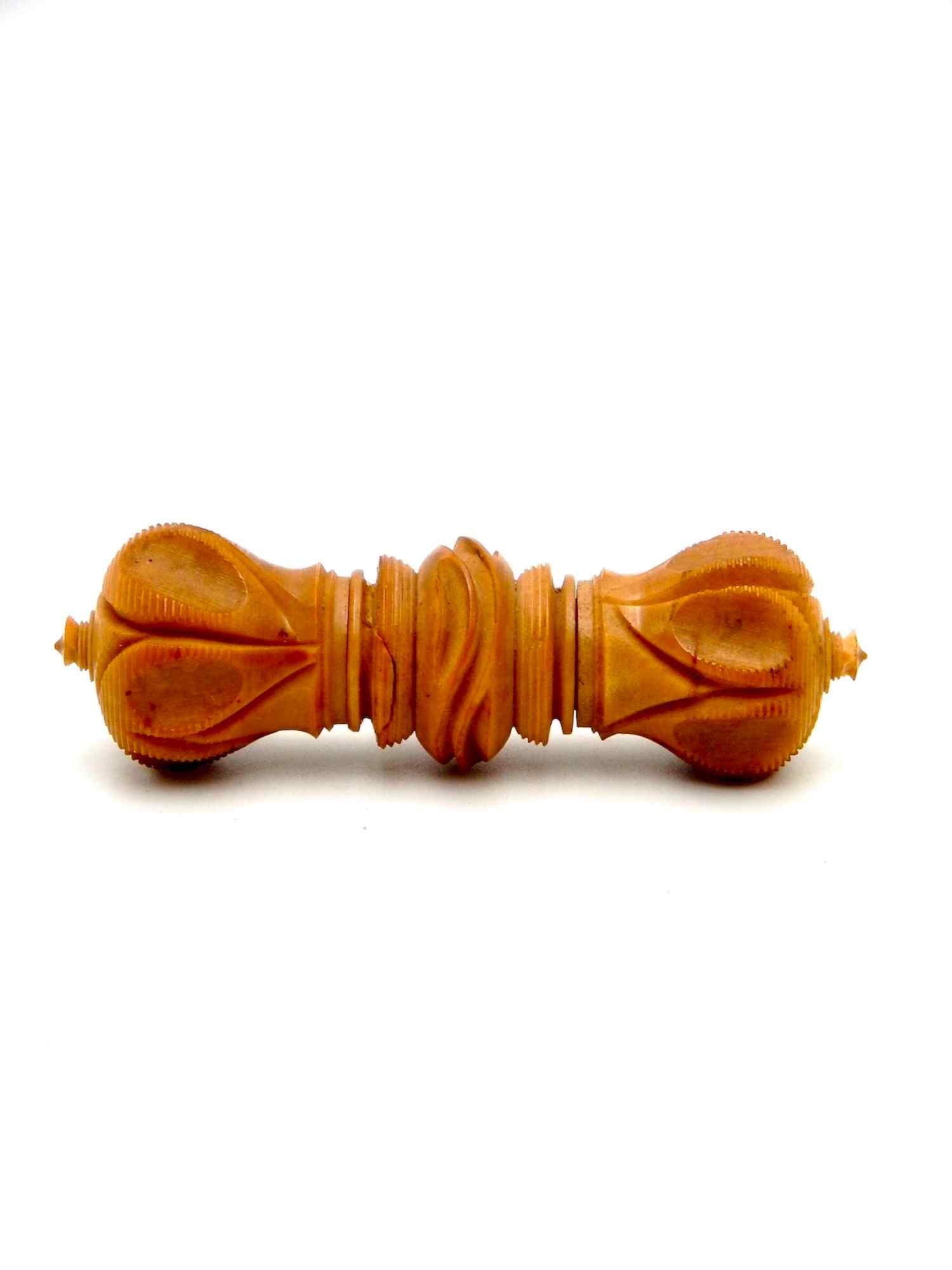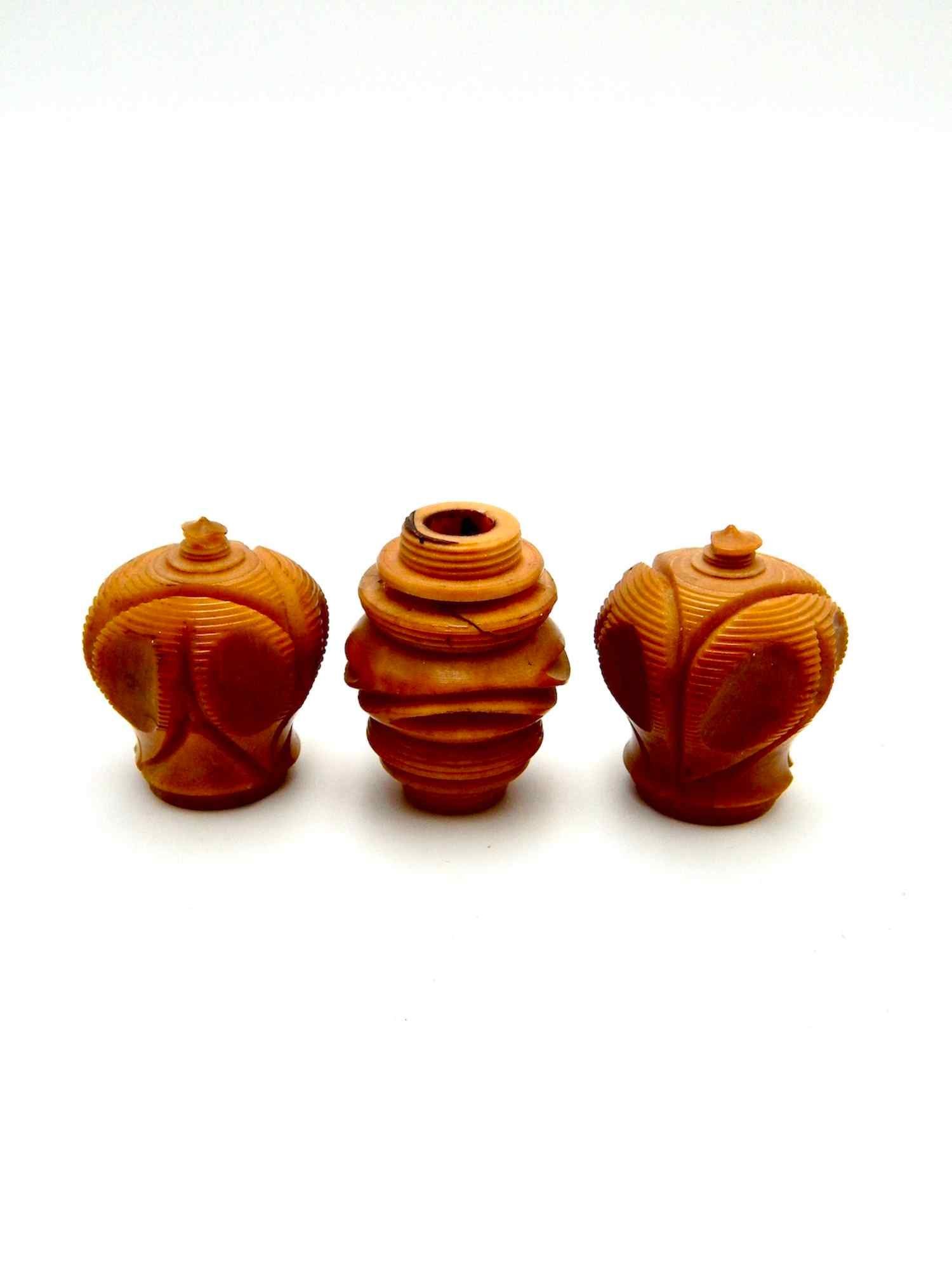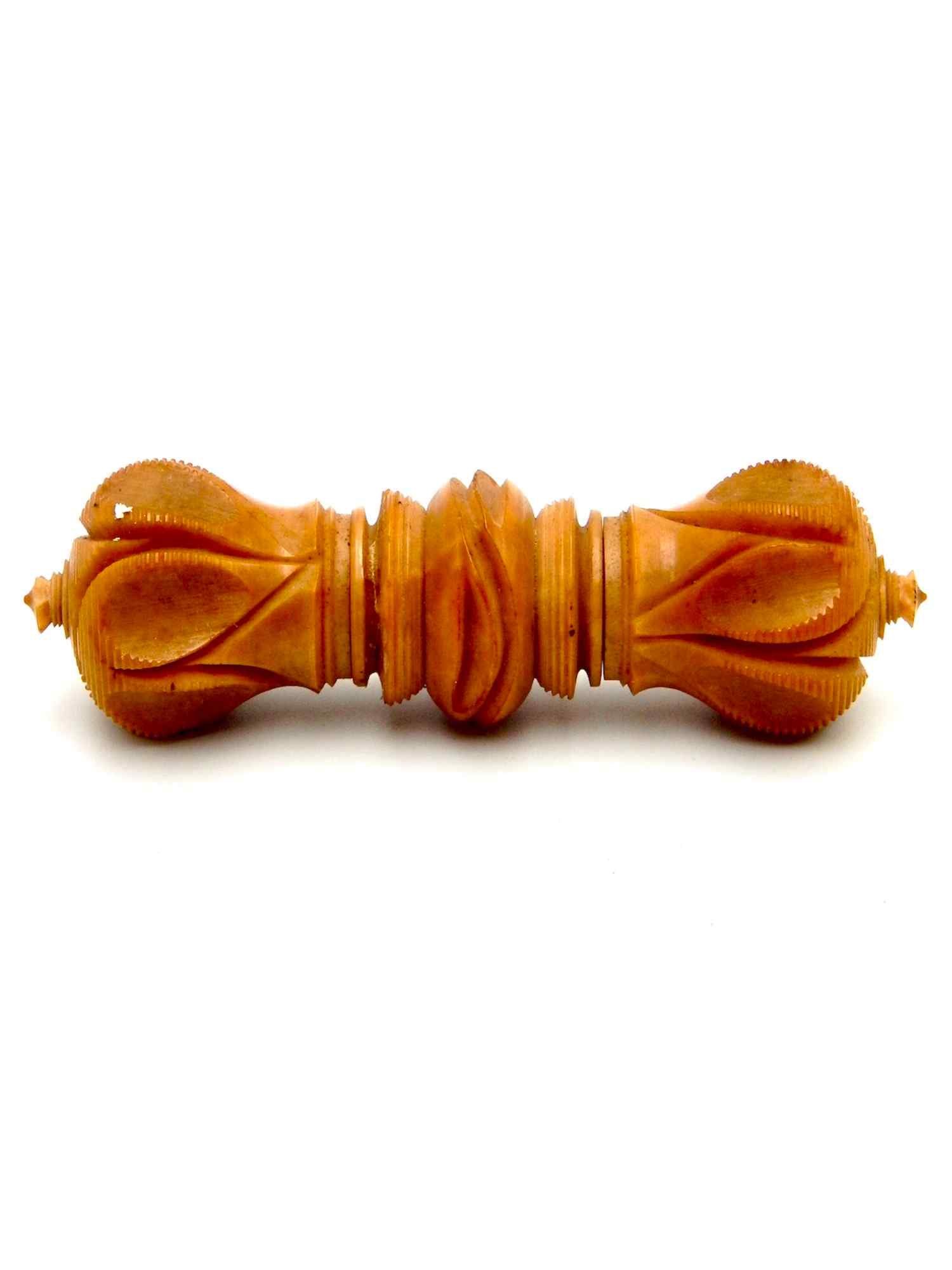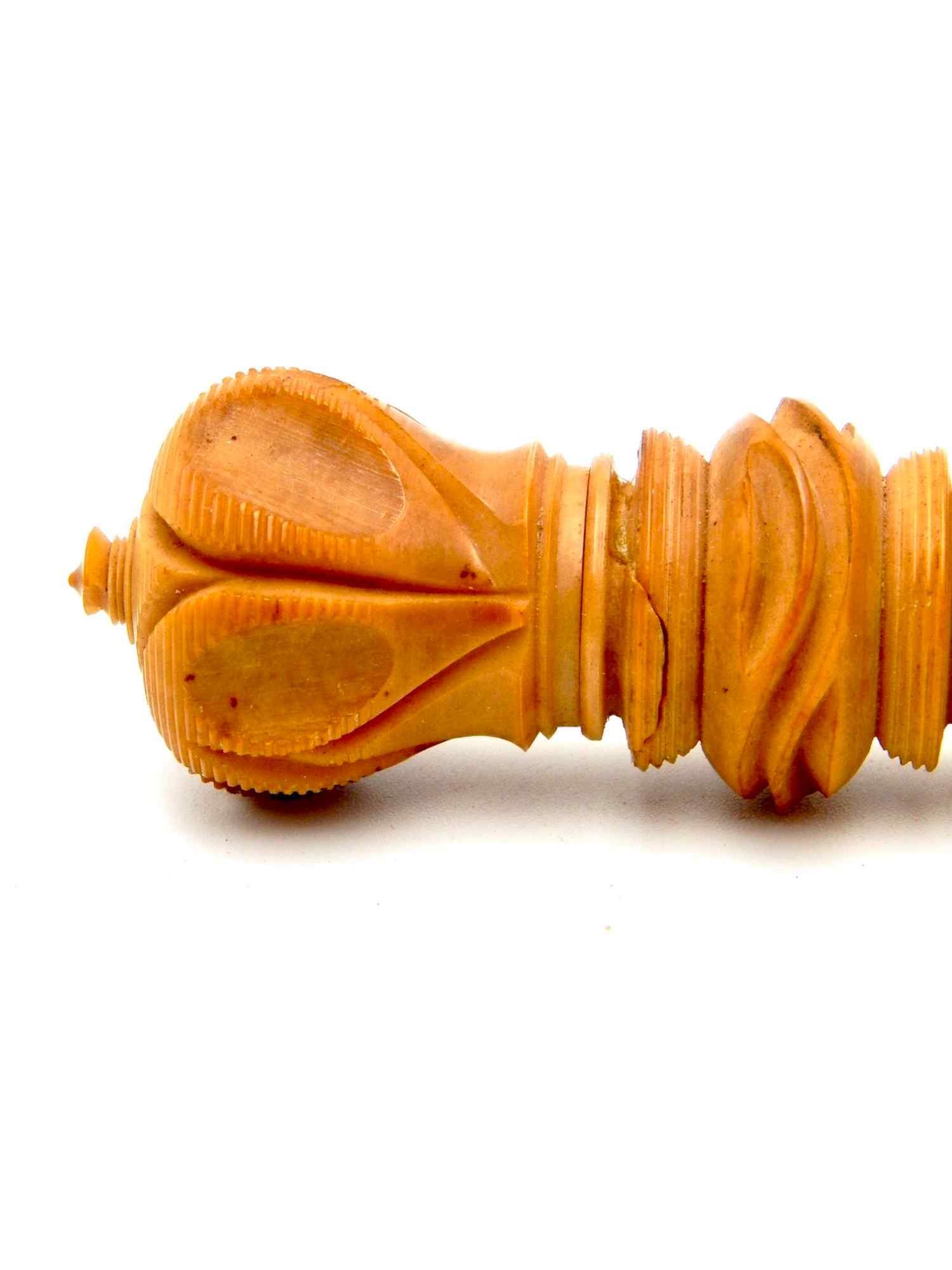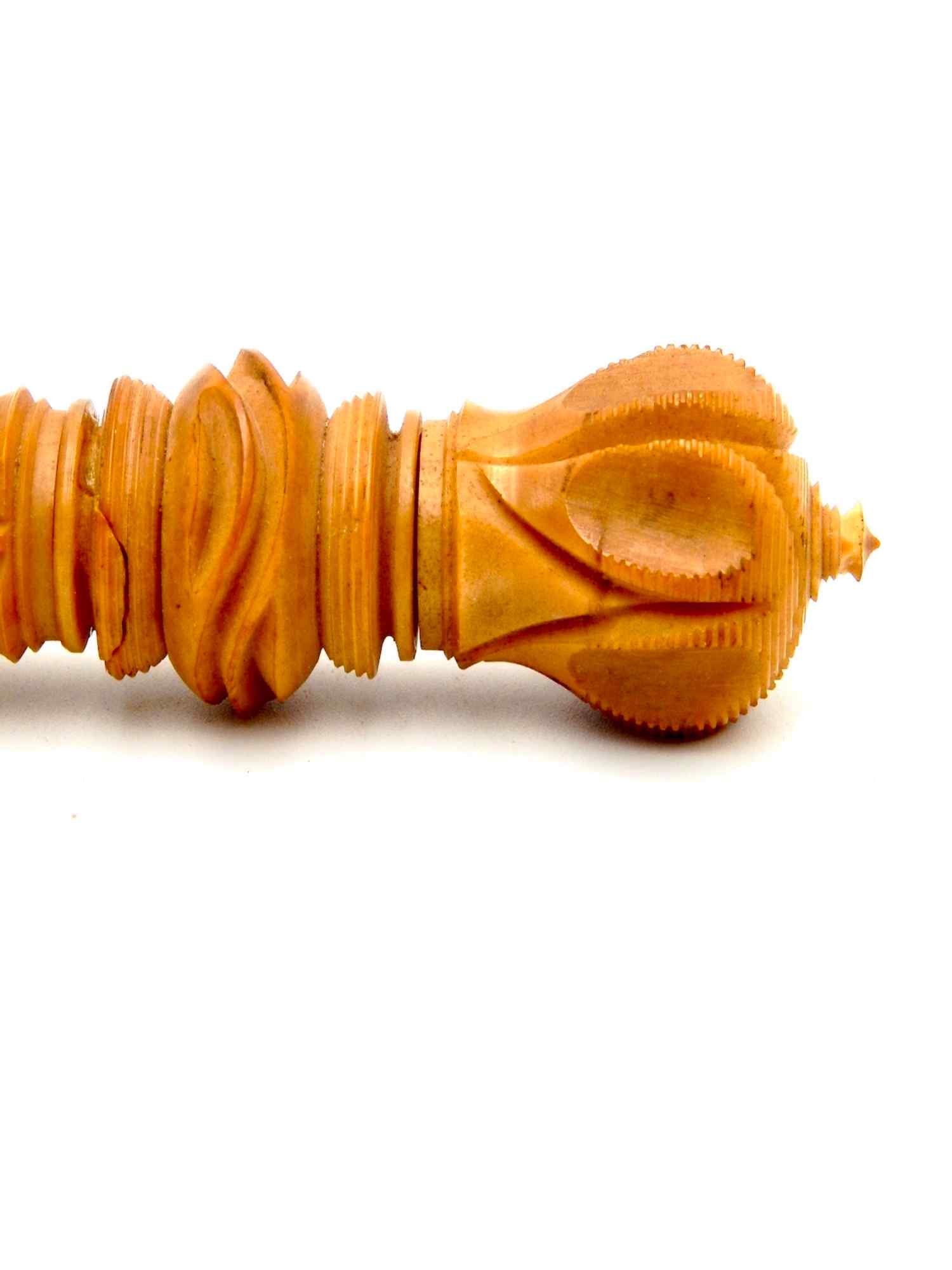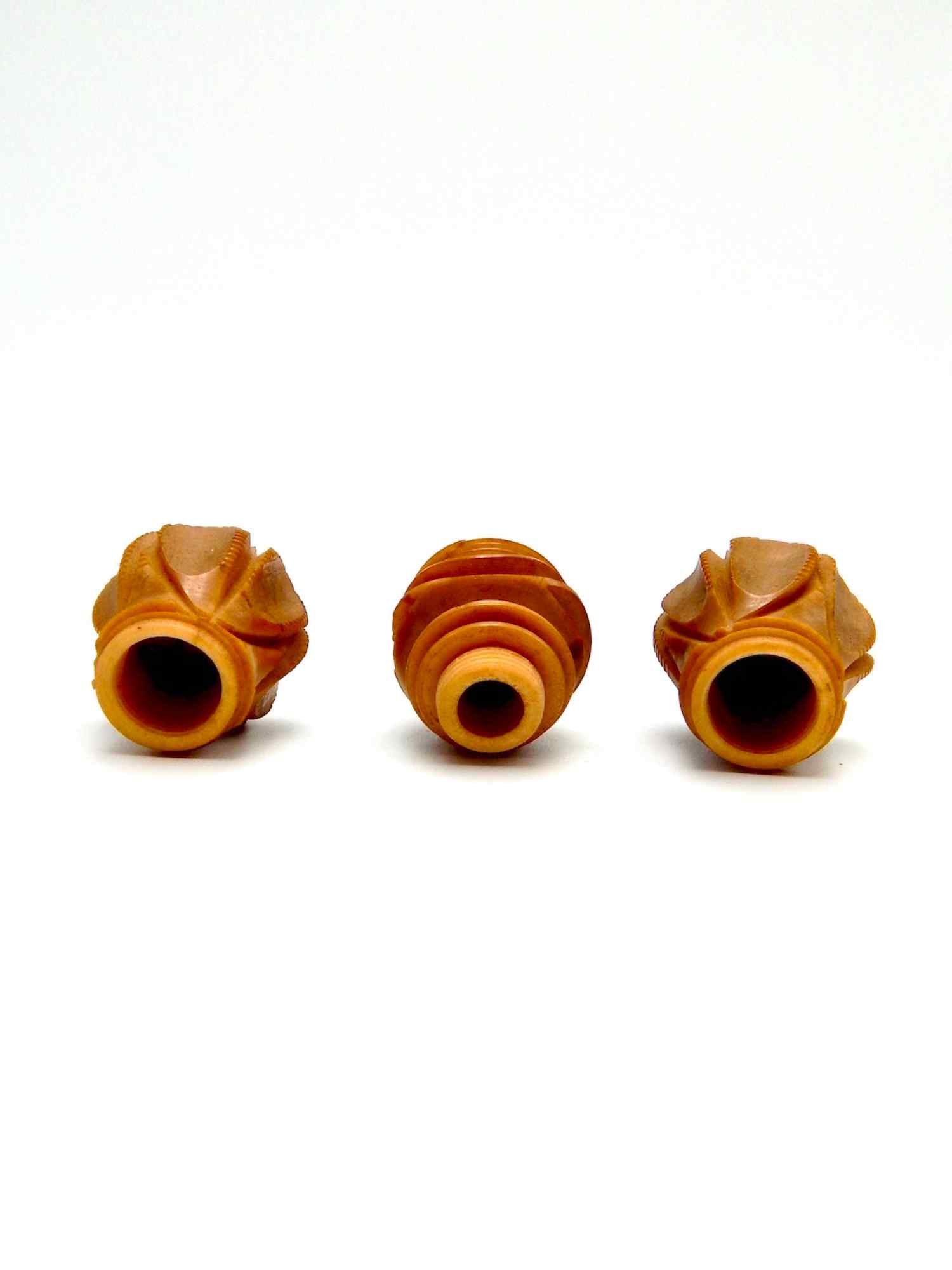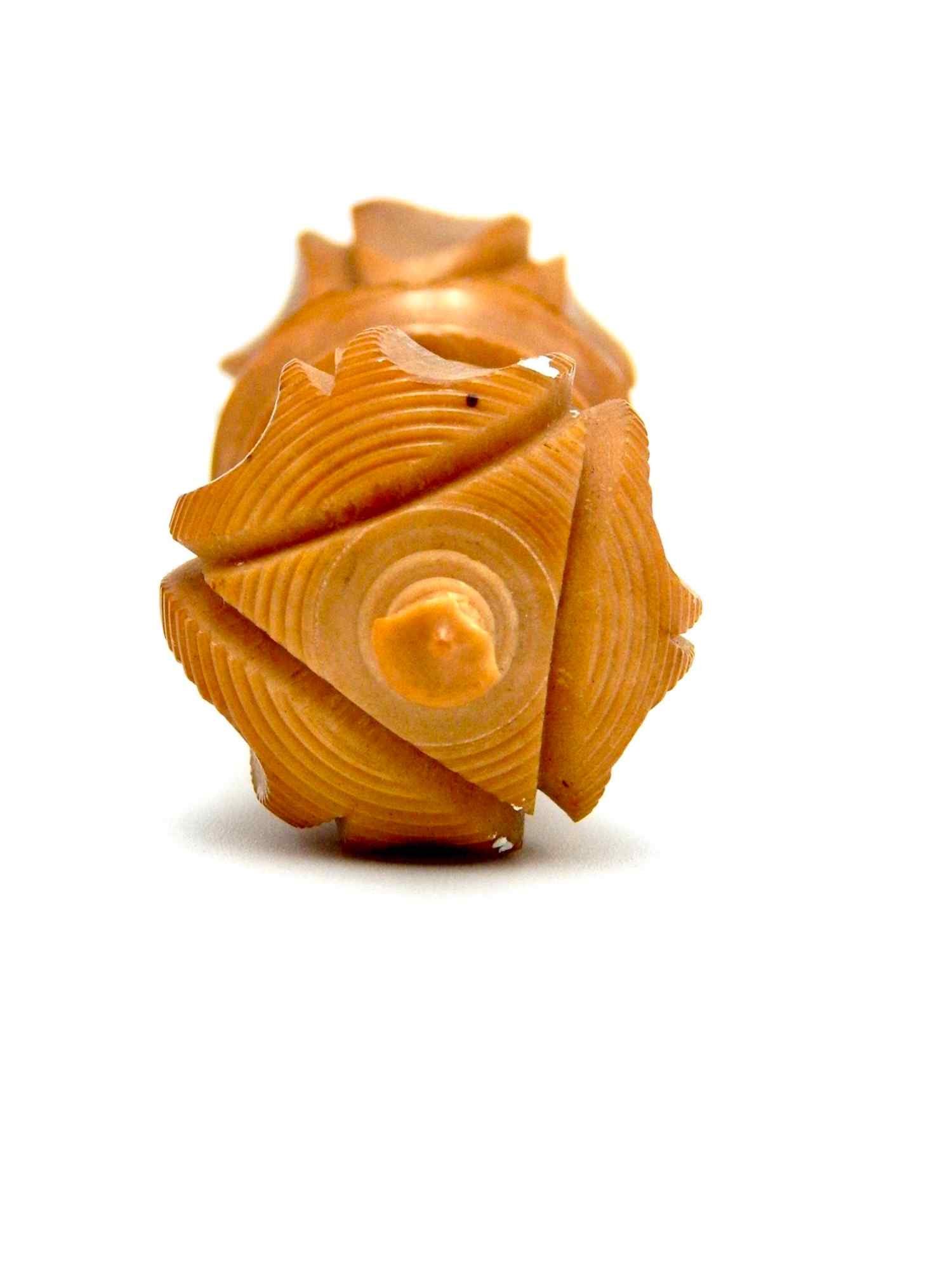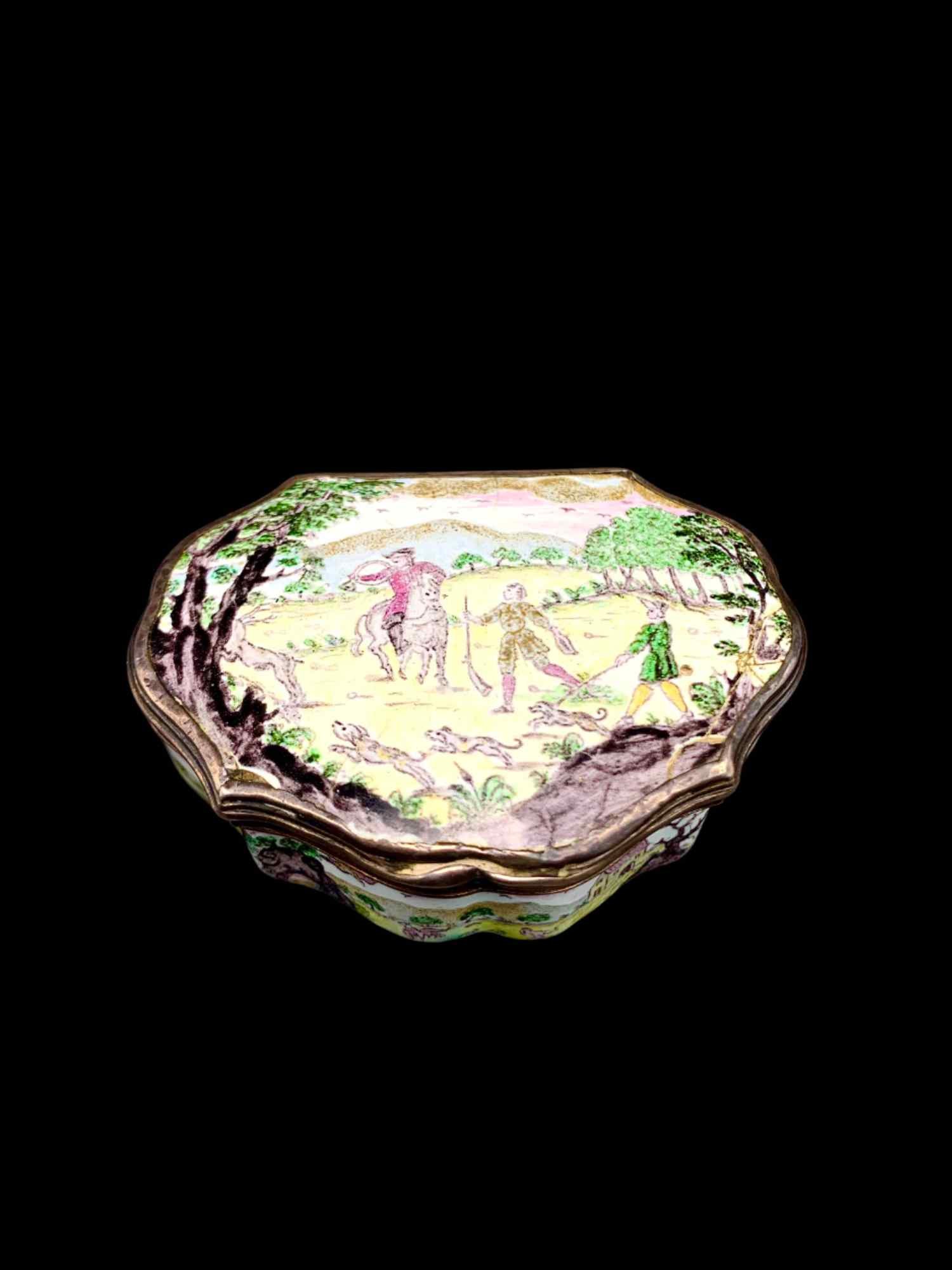 Image 1 of 11
Image 1 of 11

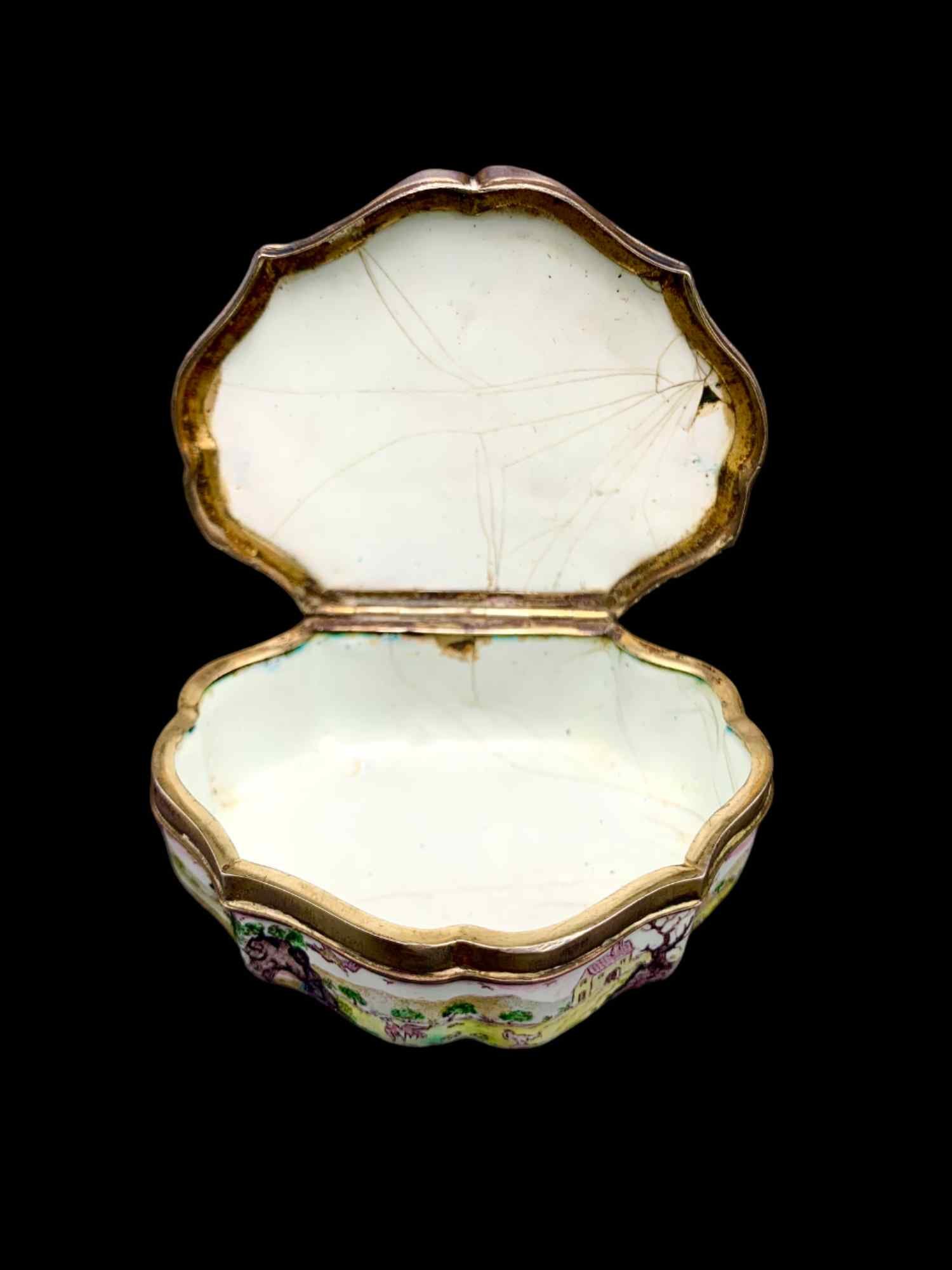 Image 2 of 11
Image 2 of 11

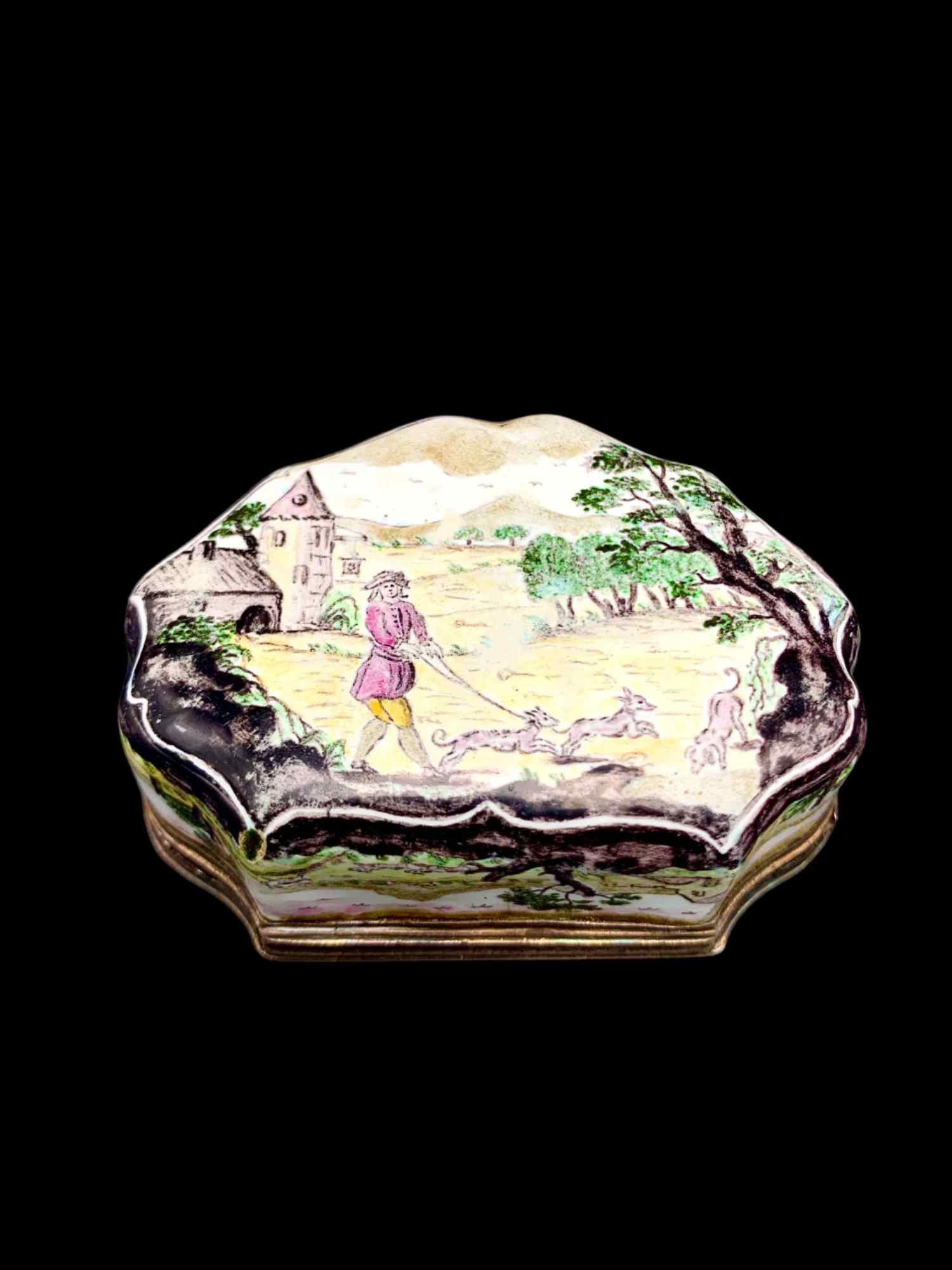 Image 3 of 11
Image 3 of 11

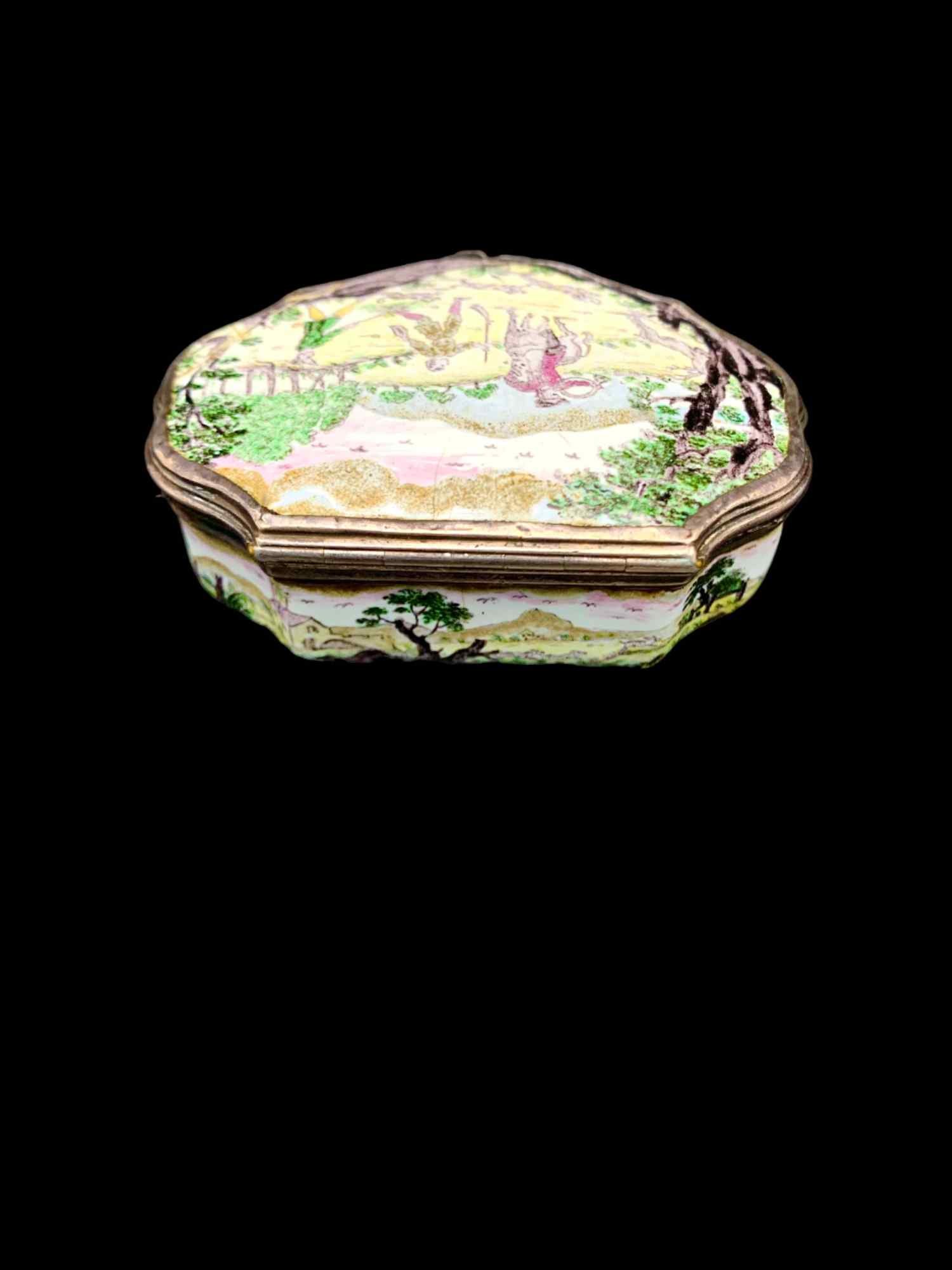 Image 4 of 11
Image 4 of 11

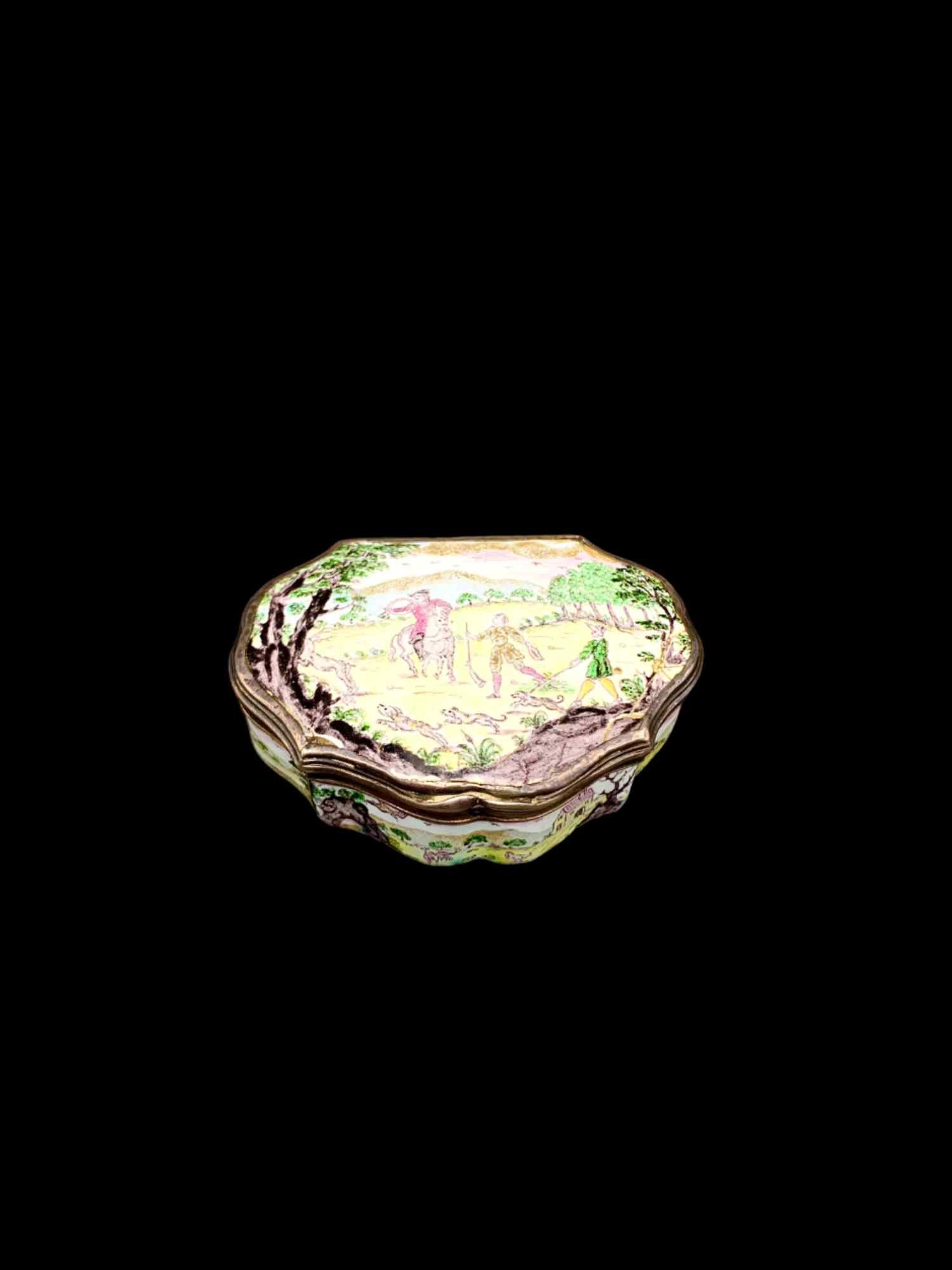 Image 5 of 11
Image 5 of 11

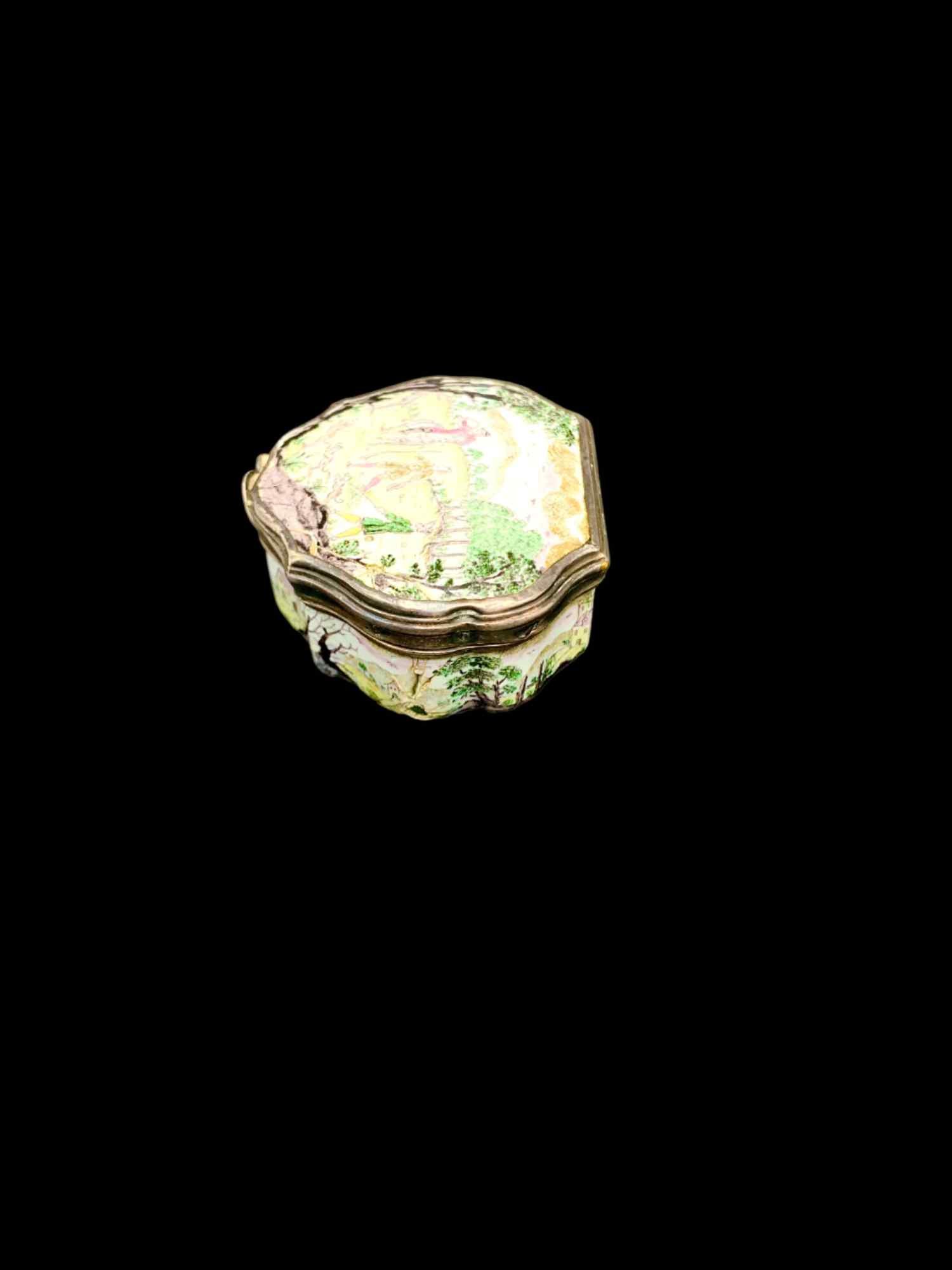 Image 6 of 11
Image 6 of 11

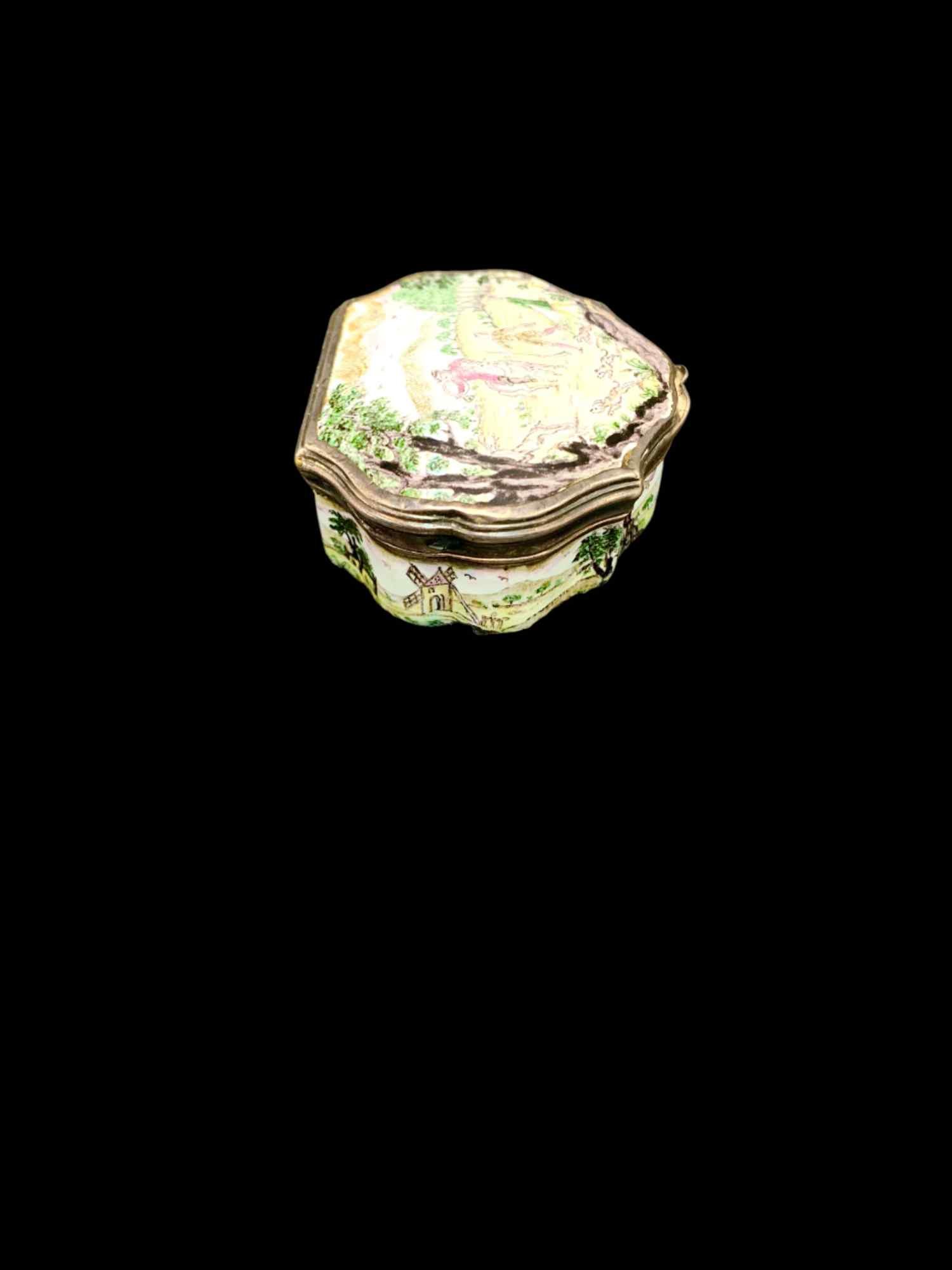 Image 7 of 11
Image 7 of 11

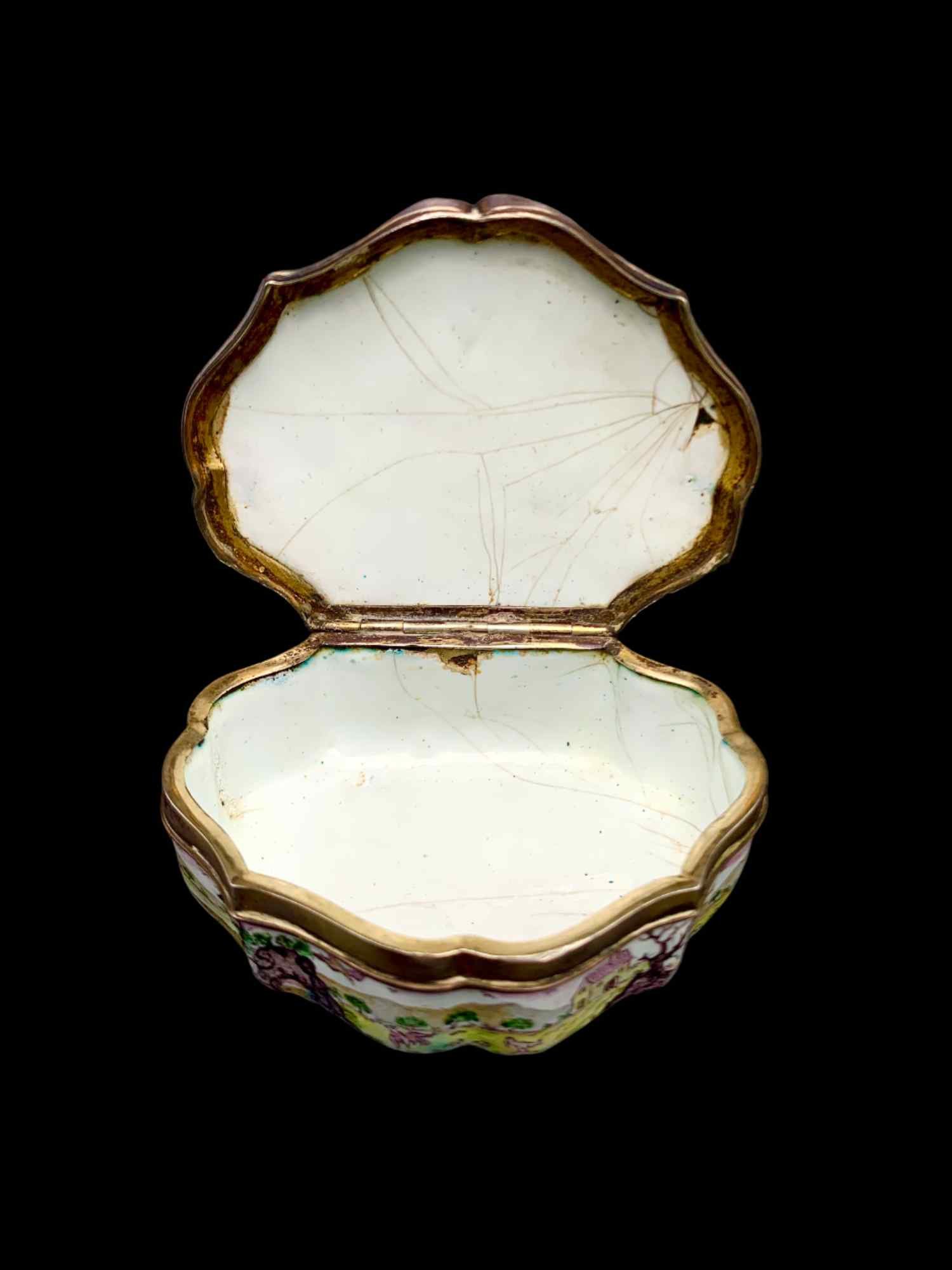 Image 8 of 11
Image 8 of 11

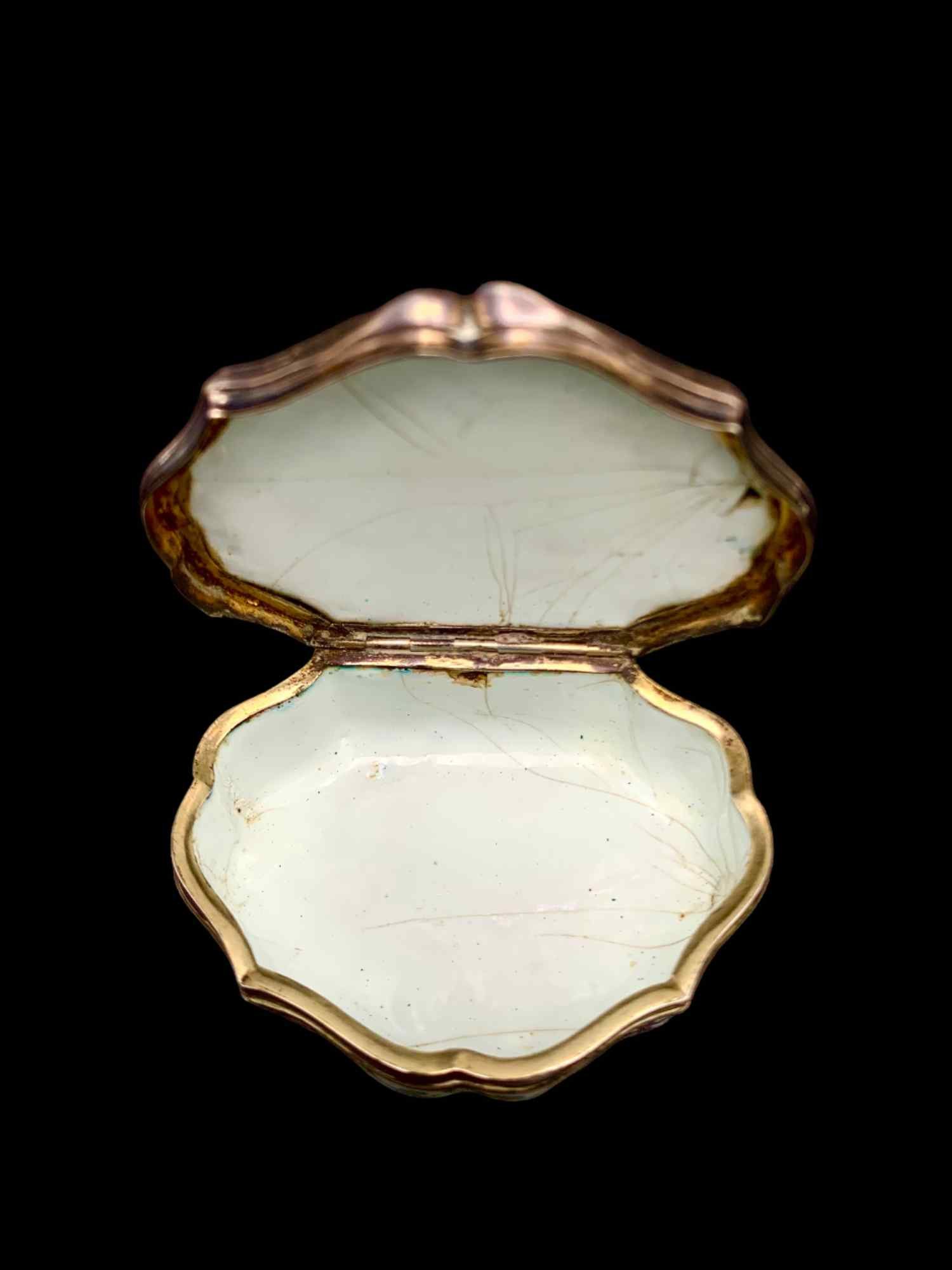 Image 9 of 11
Image 9 of 11

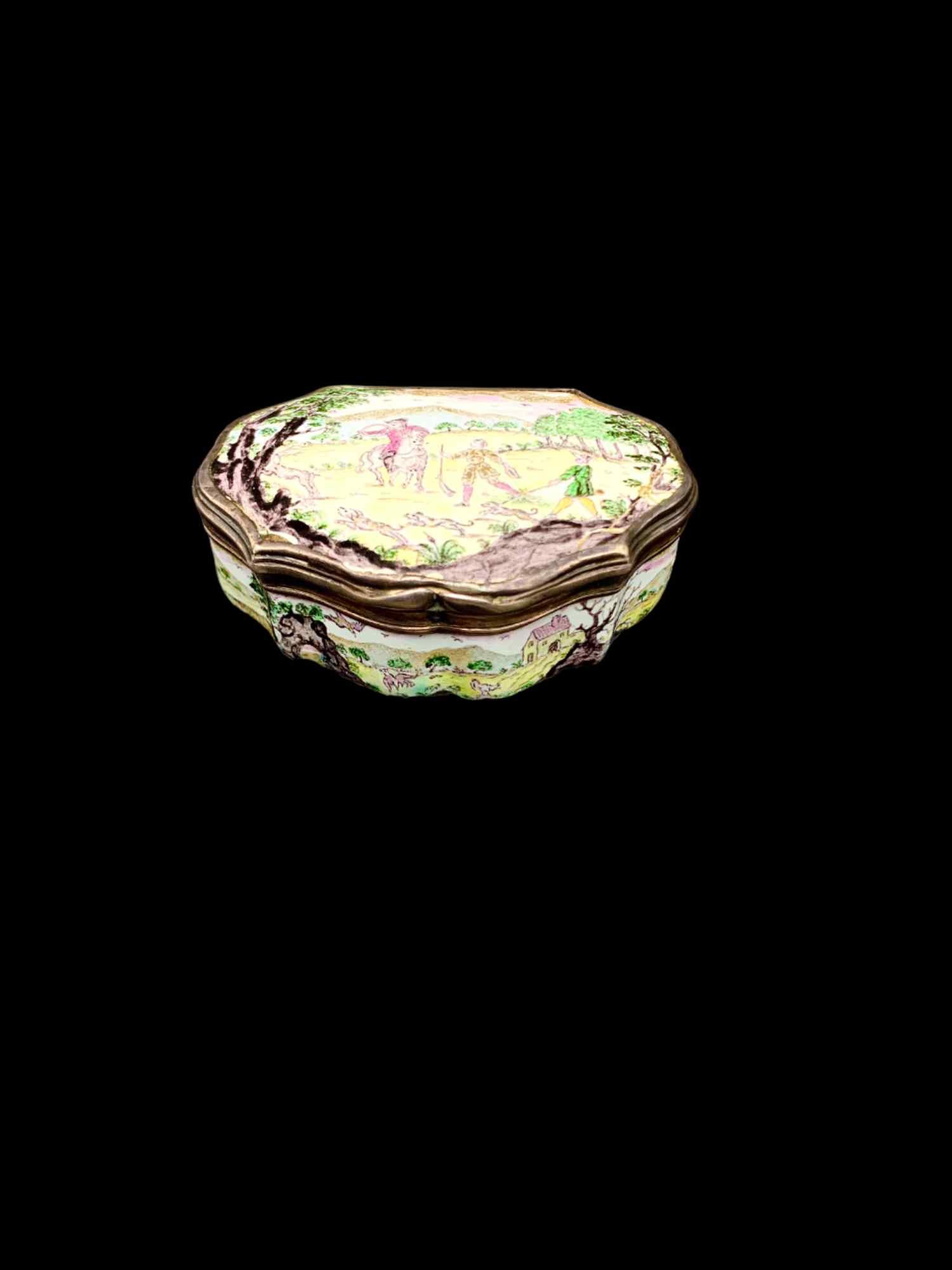 Image 10 of 11
Image 10 of 11

 Image 11 of 11
Image 11 of 11












Enameled Battersea Box
Rare and unusual Battersea snuff box with hallmarks in the silver gilt along the rim. Battersea is a type of decorated enamelware produced between 1753 and 1756 under the direction of Sir Stephen Theodore Janssen at the York House in Battersea, a large district in south London, England. Created using a transfer technique considered to be the finest of its kind, Battersea boxes became popular tokens of affection in the mid 1700s. This box portrays a wonderful 18th century European hunt scene with a castle. There are some minor cracks in the enameling that are expected of a piece this age, and the box measures 2.75 inches wide by 2 inches deep by 1 inch tall.
Rare and unusual Battersea snuff box with hallmarks in the silver gilt along the rim. Battersea is a type of decorated enamelware produced between 1753 and 1756 under the direction of Sir Stephen Theodore Janssen at the York House in Battersea, a large district in south London, England. Created using a transfer technique considered to be the finest of its kind, Battersea boxes became popular tokens of affection in the mid 1700s. This box portrays a wonderful 18th century European hunt scene with a castle. There are some minor cracks in the enameling that are expected of a piece this age, and the box measures 2.75 inches wide by 2 inches deep by 1 inch tall.























